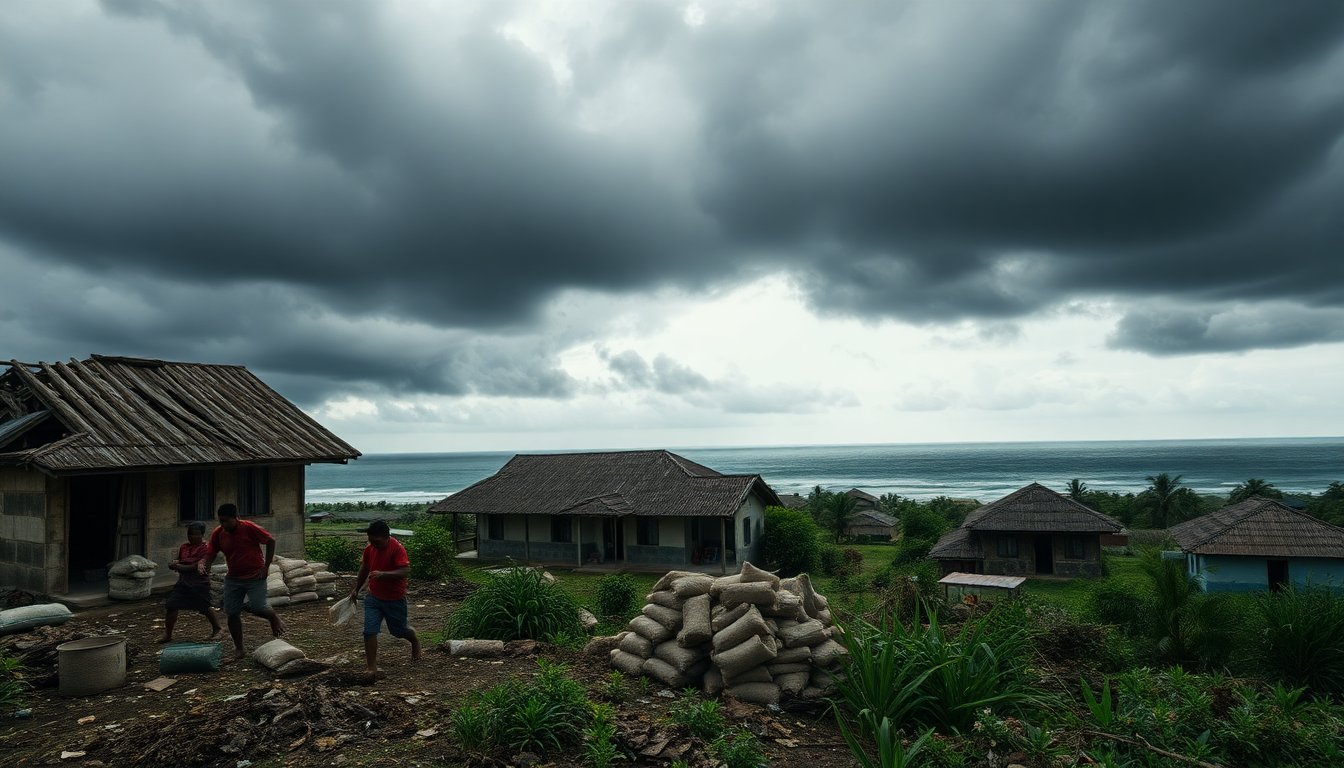Table of Contents
The Philippines is bracing for the impact of super typhoon Fung-wong, which is set to hit the nation just days after the devastation caused by Typhoon Kalmaegi. As this new storm approaches, the government has declared a state of emergency and initiated mass evacuations in areas at high risk.
The impact of Typhoon Kalmaegi
Prior to the impending arrival of Fung-wong, Typhoon Kalmaegi wreaked havoc across the Philippines, leading to over 224 fatalities and significant destruction in central provinces. Many survivors are still dealing with the fallout, having been displaced and seeking shelter in evacuation centers.
Reports indicate that more than 500,000 individuals were compelled to leave their homes as rescue operations continue to search for those still missing.
Grief and devastation in affected areas
The emotional impact on communities affected by Kalmaegi is significant.
In Cebu province, families are mourning the loss of loved ones, gathered around rows of white coffins, each symbolizing a life lost due to devastating floods and landslides. Local resident Jimmy Abatayo shared his tragic experience of losing his wife and several relatives, expressing deep sorrow and guilt as he recounted the moment they were separated.
Fung-wong’s imminent approach
As the nation prepares for the arrival of Fung-wong, meteorologists caution that this storm is likely to strengthen, with winds reaching up to 185 km/h and gusts potentially exceeding 230 km/h. The typhoon is anticipated to make landfall shortly, targeting the northeastern provinces of Aurora and Isabela.
With a storm radius extensive enough to affect nearly the entire country, the Office of Civil Defence estimates that over 30 million people are at risk.
Preparations and evacuations
In anticipation of the storm, local authorities have initiated widespread evacuations, urging residents from coastal and low-lying areas to seek shelter.
Defence Secretary Gilberto Teodoro Jr. stressed the importance of evacuating before the storm arrives, noting that rescue efforts become significantly more challenging once the winds and rain begin. Nearly 916,860 individuals have already been relocated from areas deemed vulnerable to flooding and mudslides.
Challenges ahead
The challenges posed by Fung-wong are intensified by the extensive damage already caused by Kalmaegi. Many regions are experiencing power outages, and infrastructure remains severely compromised. As a precautionary measure, schools and government offices have been closed in the affected provinces, and air travel has faced significant disruptions, with hundreds of flights canceled.
International assistance and ongoing risks
The Philippines has not yet requested international aid despite the severity of the situation. The United States and Japan have indicated a willingness to provide support if necessary. As super typhoon Fung-wong approaches, authorities remain vigilant, given the country’s history of natural disasters that heighten its vulnerability. The Philippines typically experiences around 20 typhoons each year, and the impacts of climate change are intensifying the frequency and severity of these storms.
As the nation prepares for the impending storm, it recalls lessons learned from Typhoon Kalmaegi. Proactive evacuations, public awareness campaigns, and preparedness efforts are critical in reducing the potential devastation that this new storm could inflict.





